SHRINKING WALLETS
FUEL STRATEGIC PARTNERSHIPS PAGE 4
OUT IN AFRICATHE BEAUTIFUL SOUTH
PAGE 20
TNF LOCKDOWN SURVEY PAGE 30

Issue 5
Welcome
Well. What can we say? What an extraordinary 2020 this has been so far.
Without repeating and rehashing commentary that all of us have been consuming since this pandemic disrupted all of our lives, we are still just getting our heads round what the rest of the year holds in store. Our recent TNF Lockdown Survey (see page 30) reveals the superpower we all wish we had the most - the ability to see into the future. That certainly is the power most desired by all of us at Team TNF as we try and plan for the community’s next physical get together. Where will it be? We hope to know soon…
Since we had to postpone our Africa Meeting literally at the 11th hour (our illustrious MD Edward Jones took a conference call at the arrivals hall in OR Tambo Airport in Jo’burg where the decision was made to postpone), we have had to radically reshape our community offering. With 7 in-person Meetings in the pipeline spread over 9 months (Joburg; London; Berlin; Tokyo; New York; Kuwait and Singapore) this has been no mean feat.
While our Q4 series of Meetings are still under observation, we felt we needed to get together this summer in some form given that The Annual Meeting in its traditional environs was going to be impossible. This has led to the TNF Virtual Summer Meeting – and the community has rallied around which is great to see, and will be an adventure of discovery for all of us. One benefit that has become apparent is that apart from our core membership in Europe and United States, we have attendees joining us from far afield as Mongolia, Australia, Ghana, Brazil and UAE – just to name a few.
We are delighted to be sharing with you this Issue 5 of our Journal which has become an essential piece of reading during the Summer. As well as some industry insights on key market developments, we have the usual TNF personal touch with Rand Merchant Bank sharing their favourite haunts of Joburg; our lockdown survey and also plenty of familiar faces in our 2019 Meetings roundups.
In the meantime, take care and as usual drop us a note anytime with any of your thoughts – as usual, we’d love to hear from you!
Andrew Barman Managing Director The Network Forum

3 2
Shrinking Wallets Fuel Strategic Partnerships ........................ PAGE 4 SRD II – The Industry State Of Readiness................................ PAGE 9 The Future Of Managing Relationships PAGE 10 The View Through My Living Room Window PAGE 12 CSDR - Get Ready For Tomorrow, Today! PAGE 15 Network Management And The CBDC Revolution PAGE 16 Showing Resilience In Face Of COVID-19 ............................. PAGE 18 Out in Africa - The Beautiful South ........................................ PAGE 20 Building Upon Your Past ............................................................. PAGE 25 Into The Heart Of Chenobyl PAGE 26 COVID-19: Under The Spotlight PAGE 28 TNF Lockdown Survey PAGE 30 Process Vs. Data PAGE 35 Event 2019 Photos ..................................................................... PAGE 36
Contents
THE FOUNDING PARTNERS
Shrinking wallets fuel strategic partnerships
Case study
Banks and broker-dealers have been under relentless pressure to reduce overheads ever since the 2008 financial crisis, fuelled by the added costs of new regulations, persistent revenue challenges and increased operational requirements. In response, a growing number of regional financial institutions have looked to obtain cost synergies by leveraging global custodians to support them with additional pretrade and post-trade processing.
Elsewhere, other firms simply consolidated their existing custody relationships to maximise efficiencies. The Covid-19 crisis has accelerated some of these dynamics even further, as organisations attempt to better manage their costs and operational risks (e.g. business continuity planning [BCPs] redundancy arrangements), while simultaneously trying to achieve scalability. A recent report by Oliver Wyman and Morgan Stanley suggested that optimisation of third-party relationships might even generate cost savings of between 5%-10%.
This realignment towards consolidation is also being driven by ongoing client concerns around redundancy set-ups at some of their external providers. Counterparty risk may also be another factor in prompting some risk-averse firms to consolidate their custody relationships. The same Oliver Wyman paper highlighted

that European banks are more vulnerable to a prolonged recession than their peers in the US. The paper said the top seven European banks on average currently have $3.8 billion of capital for every $1 billion of fixed cost base, in comparison to $5.1 billion at the top five US banks.
Identifying cost optimisations
Even though the long-term economic impact of Covid-19 is unknown, it is widely expected that banks and brokers will see a substantial contraction in overall revenues [Table 1]. Moreover, financial institutions are also still struggling under the weight of regulations such as Basel III, which subjects banks to much tougher minimum balance sheet capital requirements. Other regulations including the Markets in Financial Instruments Directive II (MiFID II) have also had a detrimental effect, especially on small to mid-tier brokerage firms.
The rising costs of compliance more generally – coupled with the diminished revenues from their trading functions – will result in more firms outsourcing post-trade activities, especially if such a transition helps them pivot from a fixed cost to a more variable pricing structure.
The consolidation trade-off
Consolidation
A European bank client had an operating and technology infrastructure that supported its own customer service and change management requirements, but its systems were impeding the organisation from entering new markets in Europe. They needed a scalable platform to facilitate higher levels of trading and easier entry into new markets; and were looking for a global provider in order to consolidate services and maximise economies of scale, thereby reducing their servicing costs.
Citi built an end-to-end solution covering trade execution through Citi Global Markets, along with integrated domestic and global custody services through Citi direct and global custody businesses, providing the client with direct access in home markets and full global coverage. An integrated service approach supports the client across multiple locations with a global service model, providing local senior level governance and access. A single, global contractual structure simplified a previously complex legal framework. Fees were structured to be competitive and long term in nature so as to reward growth.
Introduced in January 2018, MiFID II barred banks from selling bundled research and trading services to clients, leading to a sharp drop in commissions. One study - for example - found European commission rates paid by asset managers to brokers fell by 28% in the first three months of 2018 when benchmarked against the same time horizon back in 2017.
However, financial institutions also need to be diligent when streamlining relationships, as it can potentially increase counterparty risk. While consolidation can help expedite operational efficiencies, firms should ensure that they engage with credit-worthy, well-capitalised and regulated custodians. As part of their due diligence, they should also regularly review the applicability of mitigating constructs, such as account operator services, which help reduce counterparty exposure.
5 4
1. Oliver Wyman and Morgan Stanley – Steering through the next cycle
2. Financial News (June 20, 2018) Broker commissions battered by MiFID II
2.
1.
can be advantageous for all parties involved. Firstly, it enables clients to obtain a wider range of services beyond just post-trade; including collateral management, OTC (over-thecounter) derivatives clearing, reporting services, data management, reconciliations, cash management, foreign exchange (FX) and even execution. At the same time, it is an opportunity for custodians to cultivate strategic partnerships with their clients. By developing new offerings in line with client needs, custodians can capture additional revenue streams while enabling internal cost synergies.
Table 1.
Facilitating operational stability during Covid-1
The Covid-19 crisis has forced financial institutions into stretching their operating models so that business can continue as normal despite the overwhelming majority of staff working remotely. While most financial institutions implemented their BCPs and remote working structures relatively seamlessly and without major issue, a handful of organisations did struggle initially when Covid-19 lockdowns were first announced. Although this disruption was temporary in nature and was resolved quickly, the experience is likely to prompt more organisations to move parts of their outsourced operations to service providers whose BCPs proved resilient and stable from the get-go. Some of these operational shortcomings could also result in regulatory intervention at a later stage.
Certain institutions who had previously outsourced their operational activities to third party providers located in lower cost, offshore jurisdictions, did in fact encounter difficulties. A handful of markets - where some of these third party providers reside - simply did not have the physical infrastructure and technology (e.g. household Wi-Fi, laptops) to facilitate remote working to begin with, resulting in settlement delays and errors. As a result, these institutions have begun to reassess their dependencies on outsourced providers in low cost markets.
It is evident that outsourcing is not a risk-free process, but those risks can be mitigated by working with experienced global providers. The custodians who navigated the initial Covid-19 disruption effectively and who have since adapted to this new “normal” operating model will be the ones who attract market share moving forward.
Migrating away from legacy technology
Legacy technology and infrastructure at banks and brokers are likely to come under review as financial institutions look to offset their costs. A lot of the technology in the financial services industry is ageing, inefficient, expensive and requires manual intervention. Not only does this ongoing reliance on legacy technology make it harder for organisations to realise meaningful cost efficiencies, but it dramatically increases the likelihood of risks and errors during the operational process itself. It also makes it harder to roll out new product suites, and take advantage of nascent technologies. Replacing antiquated systems with new or disruptive technology is an exhaustive undertaking, with often staggering investment requirements in terms of the levels of financial and resource commitments. Few firms are in a position to or will want to commit to making these changes.
Simultaneously, these banks are also increasingly partnering with industry-leading fin-techs to deliver augmented and enhanced services to clients. Among some of the technologies being beta-tested across major banks and their fin-tech partners include big data; artificial intelligence, DLT (distributed ledger technology); cloud and application programming interfaces (APIs). However, incorporating these new technologies requires a lot of internal infrastructure and focus. Citi, for example, has invested heavily in a number of technology initiatives, including its Citi Ventures vehicle, which is at the forefront of the bank’s innovation strategy.
By forming strategic partnerships with global providers, banks and broker-dealers can work together to identify and develop tangible solutions that support their business growth.
Identifying the right balance
Outsourcing and consolidation should not be seen solely as an exercise in cost reduction. Simply externalising operational processes to third party providers based on cost alone could have unintended consequences. Instead, firms should be assessing whether their custodians can provide them with the latest technology and access to dynamic fin-techs. Moreover, they need to have confidence that their providers can withstand crisis situations, such as the continuing Covid-19 pandemic.
Similarly, consolidation if executed badly, can be potentially destabilising and risky. Relying on a single custodian is not typically best practice for institutions, but equally inefficiencies could emerge if various operational activities are outsourced to a disparate number of custodian partners. Clients should therefore look to form strategic partnerships and avoid spreading their wallet share too thinly across multiple counterparties. This will enable them to not only obtain more bespoke solutions but optimise their book of business with their custodians in a long-term and meaningful way.
Reto Faber EMEA Head of Direct Custody & Clearing

The material provided is for informational purposes only. Information is believed to be reliable but Citigroup does not warrant its accuracy or completeness. Citigroup is not obligated to update the material in light of future events. This does not constitute a recommendation to take any action, and Citigroup is not providing investment, tax accounting or legal advice. Citigroup and its affiliates accept no liability whatsoever for any use of this information or any action taken based on or arising from the material contained therein.

7 6
However, there are some major banking groups who are investing heavily into their technology systems in order to facilitate automation, scalability and operational robustness. Firms who are looking to grow their businesses sustainably and cost effectively should look to these large providers who have or are in the midst of upgrading their systems and investing in product development. The opportunities that exist to de-couple fixed costs through effective long-term partnerships are clear.
SRD II – the industry state of readiness
For intermediaries, the updated Shareholder Rights Directive (SRD II) remains on course for implementation in September.
Having recently declined the collective request of 11 high-profile trade associations seeking a year-long postponement of SRD II’s compliance deadline, the European Commission continues to require intermediaries – and here I include banks, brokers, wealth managers, CSDs and more – to remain on course and be ready by 3rd September of this year.
Reassuringly, given SRD II’s importance as the most significant initiative for advancing European corporate governance for many years, the industry’s state of readiness would appear to be moving forward with good momentum albeit with some levels of self-qualification.
We’re aware of many firms – custodians, large banks and brokers and other infrastructure providers, that have had plans in place for some time. Indeed this is backed up by a Broadridge industry poll in May 2020 in which, out of over 140 respondents from impacted firms spanning a range of intermediary types, 90% felt they would be either ready for September 3rd, or at least knew what was required of them in order to be so.

The above poll was conducted before the EC’s reaffirmation of the September deadline. While we are aware of further attempts to delay the September 2020 go-live date, we strongly recommend that firms now focus on executing their SRD II readiness plans with urgency. For those that are still playing catch-up, a fast-track comprehensive outsourced solution may well be the most viable option at this stage.
Like other regulatory and mandatory market changes before it, SRD II will undoubtably fall short of delivering a fully harmonised approach across in-scope jurisdictions, which in turn will add to market complexity. For example, although the updated ISO20022 is recognised by many as the only SRD II fit-for-purpose messaging type, the lack of clarity around a specific message format leaves the matter open to interpretation and variance.
More fundamentally there are a vast array of complexities to manage. The very definition of ‘shareholder’ varies across member states, and the fact that member states have been given the freedom to go beyond SRD II-defined minimum requirements in their own transpositions will inevitably fuel divergence and create customisation challenges for intermediaries that need to support a cross-border offering.
‘Without delay’ processing also means different things to different intermediaries and has not been fully defined in most markets; local requirements such as powers of attorney have not yet been addressed; to cite just two further examples. Therefore solution agility, through automated market-based rules, will play an important role in managing the complexities and nuances for any impacted intermediary.
SRD II represents a significant opportunity to improve not just transparency and engagement but also to address operational inefficiencies and achieve greater levels of automation through standardisation. By now, firms should be close to having a market-ready solution that addresses their new or enhanced proxy voting needs and shareholder disclosure responsibilities. Participating in the debate around standardisation and harmonisation is also critical if we are to collectively address some of the remaining challenges. I encourage impacted firms to take an active role, and have a strategy for agile implementation as regulation and markets evolve.
Demi Derem General Manager Investor Communication Solutions International Broadridge Financial Solutions

8 9
The future of managing relationships in a socially
distant environment
In the space of a few weeks in March, nearly all participants in the financial services industry were suddenly confined to their homes as a result of Covid-19 lockdown requirements. In relationship-driven activities such as network management, market participants are gradually accepting that their roles, duties and traditional ways of working will be totally transformed because of this pandemic. Few network managers are confident they will be permitted to return to the office in the next six months, let-alone travel. Societe Generale Securities Services (SGSS) examines how the custody industry will need to evolve as we settle into this new reality.
Remote working: Managing and maintaining relationships
Unable to travel, network managers cannot perform on-site visits, either for due diligence or service provider review purposes. Although frustrating, network managers have adapted accordingly and are increasingly using online communication platforms to engage with their sub-custodians. While network managers are precluded from physically seeing their providers, the volume of phone calls between clients and sub-custodians has increased significantly. It is essential that regular communication is maintained between providers and their clients if the relationships are to continue thriving.
A likely legacy of Covid-19 is that business travel will become far more infrequent with network managers avoiding visits to low risk countries or markets where they have limited exposures to. This will be driven by a combination of factors including costs and corporate policies, but it could also happen if some people within the industry – for whatever reason – refuse to travel
altogether. This potential trend does pose longer-term problems for the industry. The ability to effortlessly transition to remote working initially was made possible by the fact that a number of network managers and their sub- custodians have deeply entrenched relationships, some of which span back many years.
The same applies to sub-custodians and local regulators. A huge amount of effort and resources at SGSS are spent on cultivating domestic regulators and sharing critical information with them about industry best practices. These partnerships have been strengthened through social interactions, sometimes at industry gatherings such as The Network Forum and SIBOS but often in bilateral meetings and market working groups. Establishing new relationships with prospective clients and domestic regulators in a world dominated by strict social distancing and travel restrictions may not be as straightforward. While we shall likely see an irrevocable increase in digitalised networking and advocacy, only time will tell if these models can yield equivalent positive results.
A new technology model is needed
The industry has made remarkable progress in facilitating automation and straight-through processing [STP] for settlements, an achievement which helped make the migration to home working much easier. Nonetheless, there are some notable deficiencies that have created operational headaches. Several jurisdictions refuse to accept or process legal or tax documents in anything other than hard copy. A handful of regulators and counterparties also insist that certain documents have wet signatures instead of digital signatures, creating all sorts of logistical problems. That these rules are not harmonised often makes client onboarding and account openings difficult in specific markets. In order to expedite the onboarding and set-up process, there needs to be wider move to digitalisation from issuer through to investor.
Equally, investment into disruptive technologies – such as application programming interfaces [APIs], artificial intelligence [AI] and robotic process automation

[RPA] – should also be maintained. This recent crisis has demonstrated how integral robust technology systems and infrastructure are to ensure operational resiliency. With regulators – including those in the US and UK – likely to further scrutinise the operational resiliency of third-party providers, it is imperative that sub-custodians, market infrastructures and global custodians continue investing in their technology programmes. Recent conversations with clients indicate there is likely to be an acceleration towards adopting new technologies to mitigate the risks associated with the decentralisation of processing operations, such as payments or striking net asset values.
Getting more serious about BCP
As the crisis unfolded, sub-custodians were inundated with ad hoc due diligence questionnaires from network managers making inquiries about their BCPs (business continuity plans). Although the AFME (Association for Financial Markets in Europe) due diligence questionnaire template does make numerous references to BCP, network managers will likely redouble their focus on providers’ outsourcing arrangements, a lot of which has since been offshored to markets such as India, Malaysia and the Philippines for cost purposes. This model could face scrutiny post-Covid 19 as more providers potentially look at adopting a split country approach.
In the case of India, the overnight imposition of lockdown caught market participants unaware with many people simply ill-equipped to work from home, causing significant delays processing trade settlement. This prompted some banks to temporarily re-onshore operations so as to ensure trades actually settled. The entire episode could spark debate about whether it is prudent to concentrate so much operational risk in a single market, especially given the wider systemic implications. While offshoring can lower costs, contingency measures to re-onshore certain back office processes are often lacking. This could require banks to diversify their outsourcing or offshoring arrangements across multiple markets.
Securities services: The future of working
Extensive column inches have been devoted to whether or not the high-rise city office will be consigned to the past. In the immediate term, the need to pay for premium real estate is likely to diminish, especially if it is difficult to cajole people back into the office. Moreover, other staff may not want to use public transportation or risk exposure until the Covid-19 situation stabilises.
However, there are limitations to home working. A number of colleagues have reported internet connectivity issues at home, making it harder for them to perform their roles. A middle ground is likely to emerge over the mid-term. This compromise solution could see some banks supporting flexible working, but also opening up decentralised offices outside of major cities and making them available to employees local to that area.

Where do we go from here?
Few people could have foreseen what would transpire in 2020. The securities services model has weathered Covid-19 so far, but its long-term implications are not yet fully understood. The sad reality is that network teams could have to conduct meetings with their providers remotely for a long time. As the industry familiarises itself with this new normal, it will have to evolve, and quickly.
Stewart Gladstone Head of Segment & Solutions for Banks & Financial Intermediaries, Societe Generale Securities Services stewart.gladstone@sgss.socgen.com www.securities-services.societegenerale.com
10
The view has changed from the living room window
As an independent international capital markets infrastructure and training consultant, the onset of Covid–19 very quickly put an abrupt halt to all my scheduled overseas and domestic assignments with projects in Saudi Arabia, Kenya and Cyprus being put on hold for the time being. And of course the TNF Africa, Russia and Berlin Annual Meetings.
With retirement age slowly creeping up on me, a decision had to be made on how to fill my days other than the usual clearing up the garage and garden shed, which by the way were accomplished at an early stageand the contents disposed of prior to the local recycling centre being closed.
Even though not classified as being “shielded”, but having underlying kidney and blood autoimmune (APS) problems and combined with the work drought, I decided to self-isolate and eventually furlough myself. It was then I embarked on trying something that would keep me outdoors and at the same time take advantage of the every purifying Surrey air.
My past experiences in the garden were the odd planting of dubious colourful plants, which usually only flourished for a few weeks acquired from the gardening section of my local DIY chain.


This decision came at the same time that the vast majority of the UK population also came to the conclusion that gardening may be a good idea. This dramatic sea change immediately resulted on a “run” on gardening products akin to the “toilet roll saga”. My initial challenges were:
1) Acquiring the material for a raised bed
2) Sourcing suitable planting compost


3) Finding something to actually try and grow
At the outset, the kitchen and dining room windowsills became the seed propagation location prior to being transferred to a mini greenhouse frame on the patio. These early seedlings met an early demise when a strong gust of wind attributed to them being scattered across the patio. So, my initial foray suffered a setback but, undaunted, I continued with my endeavours. This has resulted in a growing selection of fruit and vegetables, most of which originated from seed and include Green Beans, Peas, Courgettes, Parsnips, Celeriac, Sweet Peppers, Carrots, Lettuce, Radish, Strawberries, Raspberries, Gooseberries, Blueberries, Rhubarb and the usual array of garden herbs. Seed Potatoes have recently been added to the portfolio. I drew upon a wide selection of containers to grow my produce, which included my local council glass and bottle recycling box for the tomatoes and an electrical transmitter shipping box for the beans and peas. Due to publication deadlines we are still awaiting the fruits of our labours but more importantly we have a good selection of “work in progress”.
Another part of the learning process was that once planted and in the various stages of growth, these plants require feeding and have had to resort to setting up calendar reminders as to what and when they require feeding. Also, at the age of 64, the acquisition of a sturdy gardening stool-come-kneeler is essential.
The greenhouse frame continues to be used to bring on Cherry and Watermelon from seeds extracted from the consumed fruit and Sunflowers nicked from the wife’s bird feeders along with additional Carrots, Lettuce and Radishes in various stages of growth. My biggest failure, especially as most of us must have tried it during our youth, was the growing of various varieties of Cress.
COVID-19 has also been the catalyst in my decision to give up my office in Morden after 23 years. That clear out process gave me the opportunity to re-live the various mediums we have used over the years to give presentations at the various conferences I have presented at over the years, including those from overhead projector transparency film, 35mm slides, floppy disks, CD-ROMs and USB sticks. Most of which now reside in the detritus of my local commercial waste recycling plant.
I was lucky enough to source a suitable supply of compost and a limited selection of vegetable seeds before they became extinct and the local garden centres were forced to close. One of my biggest mistakes was underestimating the amount of compost required, especially as it was purchased in litres - which I thought only related to fuel.
Google was overworked, even more than the increasing reliance on “Zoom” conferencing and when successful, having to endure the interminable wait for the product to arrive. My record to date was 47 days waiting for some strawberry and tomato plugs to arrive. One couldn’t believe how resilient plants can be after having to endure the UK postage or courier system and how quickly they can be revived with a good dosing of water.
The garden dustbin incinerator has also been put to good use during the lockdown period, albeit during the twilight hours when it caused little to no inconvenience to my neighbours. Not only has it been used to dispose of the growing pile of garden waste, it has also come in very handy in the disposal of out of “retention period” for my companies corporate and VAT records and receipts.

I believe I have now reached a stage of enjoyment and more importantly a form of relaxation to make sure that once this is all over, I will adhere to my wife’s instructions to “make sure you keep it up”!
Bruce Lawrence MD, HBL Consultancy Services

13 12
CSDR – get ready for tomorrow, today!















There are a lot of good things about Central Securities Depositary Regulation (CSDR). Having a clear regulatory regime for such vital market infrastructures is more than welcome.

However, getting ready for CSDR’s Settlement Discipline Regime (SDR) was always a challenge. Not just for custodans, for the whole market. That is without having to also prepare for Shareholder Rights Directive II (SRDII) and even before the disruption resulting from Covid-19.
The breadth of the Settlement Discipline Regime
SDR seeks to improve almost every aspect of settlement – allocations, confirmations, tolerance levels, the population and matching of settlement instructions, cancellations, hold and release, partialling and recycling. It covers a great deal.








So it is no surprise to hear that much of the post-trade industry is struggling to be ready for February 2021. It is not far away. Time is short.

To learn more about CSDR you can read our handbook or listen to our podcast. Our toolkit, to be published shortly, will provide more in-depth insight of the changes to SWIFT instructions.


Still some uncertainties

We are still waiting for key information from most CSDs. We need to know how and what they will communicate about penalties, if they will have appeal processes and what transaction codes they will use. This is core information. Without it, neither custodians nor their clients can prepare properly. Let alone test.
Four priorities
There is much that we can all do to minimise settlement failures now. And, of course, such improvements will be even more beneficial come February.
Four things worth focussing on are:

1. Having accurate and up-to-date Standard Settlement Instructions (SSIs) is essential. This requires having a process to update any SSI information that causes a fail and to engage quickly with trading counterparts to remediate where appropriate. It sounds simple, but many firms have had problems with this for years.
2. Managing inventory to ensure that stocks are in the right place to allow settlement. Most often, this is about realigning between the International Central Securities Depositories (ICSDs) and the domestic CSDs.
3. Being able to process partial settlements is key for settlement efficiency. Even if the buy-side has not been particularly keen on partial settlements (particularly for bulk trades with many allocations).
4. Reviewing how to best use fails coverage programmes. The economics around them is shifting as the cost of failure increases.
Sorting these issues out will improve settlement efficiency and save much time, effort and money. Even more so, come February.
 Alan Cameron Head of Brokers Market Strategy BNP Paribas
Alan Cameron Head of Brokers Market Strategy BNP Paribas


15
Network management and the CBDC revolution

Initiatives focused on central bank digital currencies (CBDCs) are becoming increasingly ubiquitous. Interest in CBDCs, an electronic form of central bank money that can be used by both businesses and consumers to make payments, is gathering momentum and has the potential to fundamentally transform financial services.
In fact, the Covid-19 crisis has accelerated a number of CBDC initiatives amid mounting public health concerns about the handling of physical cash, according to the Bank for International Settlements. In addition to expediting cross-border payments; reducing cash management costs; enhancing transparency and facilitating wider financial inclusion among un-banked communities, CBDCs could significantly reshape the securities services model. Standard Chartered assesses how custodian banks will need to evolve in order to meet the increasing institutional client demand for digital assets, including CBDCs.
The market for CBDCs
According to John Ho, Head of Legal, Financial Markets, at Standard Chartered, a number of countries have launched their own CBDC trials or proof of concepts. These include China, the UK, Canada, Singapore, France and most recently the US, a shift that has happened largely in response to investors’ attitudes towards digital assets. A recent study by Fidelity Digital Assets, for example, found 36% of institutional investors have exposures to digital assets, while 60% agreed that these instruments should have a place in investment portfolios. Many clients increasingly believe that digital
assets, such as CBDCs, could be quite attractive in these current market conditions as they are uncorrelated to other asset classes and maintain demand for central bank money.
Jyi-Chen Chueh, Head of Group Custody Services Product at Standard Chartered, said some investors believe CBDCs carry a reduced counterparty risk relative to stablecoins as the former are issued by central banks and the latter by commercially-run institutions. As a result, investors transacting in CBDCs will be taking on central bank risk whereas those using stablecoins have to consider their exposures to private issuers, which might be more decentralised, less regulated and whose value and liquidity may be affected by market forces. Trading CBDCs is therefore seen as being less risky among investors.

However, Fidelity pointed out that some investors still have reservations about digital assets, citing their volatility; a lack of fundamentals and concerns about market manipulation.
Time for custodians to act
In response to growing client interest in digital assets generally, more custodians are starting to develop digital asset servicing capabilities. Zhu Kuang Lee, Head of Product Innovation at Standard Chartered, said a handful of custodians are looking to create digital wallets to facilitate the safekeeping of CBDCs. However, Lee added the industry does need to collaborate and agree on standards around CBDCs, especially for cross-border transactions.
Aside from supporting clients’ growing digital asset ambitions, custodians could also net a number of operational benefits if CBDCs become more widespread. A 2020 survey of 145 market participants by the International Securities Services Association (ISSA) and The Value Exchange found 60% of respondents believed CBDCs would be the primary payment funding mechanism to enable DLT (distributed ledger technology) adoption in the wholesale cash and securities markets, putting them well ahead of real-time gross settlement interfaces.
Chueh explained CBDCs could - in theory - be transacted 24/7 using DLT which would reduce settlement risk, especially on cross-border trades where, for instance, inherent frictions linked to time-zone differences might be alleviated. This could potentially alter how CSDs (central securities depositories) and CCPs (central counter-party clearing houses) operate from the perspective of a trade lifecycle. Additionally, the growth of CBDCs may also result in changes to the role of network management as new technologies and market infrastructures emerge to support trading of digital assets.
Chueh added that while network management will evolve, the principles behind it would remain the same. “In a CBDC world, there will still be a network of custodians and market places to manage and oversee. However, some of the traditional, and often local market infrastructures and connectivity might change with the increased adoption of transnational digital assets. Moreover, the role of the custodian in providing expertise and easy access to multiple markets, including new digital ones, will still be there,” he said.
As CBDCs are such an embryonic concept, few network managers have yet to fully digest what the implications of this asset class will be. However, some forward-thinking network teams are beginning to educate themselves about CBDCs as they prepare to future-proof their businesses against disruption.
A number of countries have launched their own CBDC trials or proof of concepts - largely in response to investors’ attitudes towards digital assets.
60% of respondents in a ISSA 2020 Survey believed CBDCs would be the primary payment funding mechanism to enable DLT adoption in the wholesale cash and securities markets.
In a CBDC world, there will still be a network of custodians and market places to manage and oversee.
1. Reuters (June 11, 2020) Pandemic pushes central bank digital currencies into top gear
2. Fidelity (June 2020) The Institutional Investors Digital Asset Story
3. Fidelity (June 2020) The Institutional Investors Digital Asset Story
17 16
1.
2.
3.
Showing resilience in face of COVID-19
UniCredit’s Global Head of Securities Services, Julia Barbara Romhanyi, explores the impact of COVID-19 on securities services and discusses the way forward for the industry.
The outbreak of COVID-19 has left businesses of all kinds grappling with unprecedented challenges – be it financial strains, the health of the workforce, or the logistical issues surrounding remote working. The securities services industry is no different. In the face of these challenges, however, participants can be proud of the resilience they have shown.
It has certainly been a demanding crisis. In mid-February, when the first wave of infections was recorded outside Asia, UniCredit proactively issued a blanket ban on business travel while triggering contingency plans to mandate working from home for the majority of staff.
Our colleagues and customers’ health and safety has always been, and will remain, our utmost priority. From the onset of the crisis, we have acted decisively with this aim in mind – while taking prudent measures to ensure business continuity.
In some areas, the bank was already prepared for the remote working paradigm. Over the course of our multi-year strategic plan, Transform 2019, we launched an array of digital initiatives to achieve operational flexibility and develop scalable infrastructure. Thanks to these efforts, we were able to rapidly establish remote working capacity when COVID-19 struck – giving us a strong footing to manage the transition.
We reacted with decisive actions to protect employees and clients, and adopted a number of measures that were critical in helping curtail the spread of the virus within the bank, as well as in the wider society.
Thankfully, since UniCredit employees have had the experience of working from home for some time, much of the banking population was already equipped with the necessary tools when the virus broke out – those who were not, were quickly provided with laptops and monitors. These measures ensured all colleagues had proper access to the relevant platforms, and a new working rhythm for remote operations was swiftly established.
The unique impact on securities services
There have also been a number of challenges specific to the securities services industry. For example, in several countries, the working from home paradigm is hampered by the need to use physical documents for certain business functions, such as tax reclaims, as well as physically participate in annual general meetings.
To overcome this, UniCredit’s securities services had to identify solutions that would allow colleagues to effectively conduct their daily duties from home. During the peak of the crisis, in most of the countries in which UniCredit offers securities services, 100% of the workforce was working remotely. In the remaining countries, where regulations require paper documentation or physical presence, approximately 30% of staff were present in the office – protected by a raft of safety measures – in order to conduct critical tasks.
Now, as we approach the second phase – and the workforce gradually returns to the office – we have divided colleagues into two groups and set up a weekly, or bi-weekly, rotation system – alternating between the head office, and the Group’s back up sites. This is successfully limiting the rate of infection among the bank’s population.


And, as the data on infection rates continues to improve, UniCredit welcomed back more team members to its offices, as of Monday 22 June.
From surviving to thriving
Thanks to the pro-active measures taken early on, we have successfully managed the COVID-19 emergency for the past few months.
Of course, when it comes to working from home, certain factors prove more challenging to overcome than others. Those with young children, for instance, require a greater level of support than those without. Network speed, too, can be a big challenge – particularly for those with daily deadlines in settlement and net asset valuation.
The bank’s remote working policy has been critical in this respect – promoting business continuity, in spite of the challenging climate. What’s more, we have found it useful
for colleagues to support each other by sharing “best practices” on weekly and monthly calls, which occur at a local, and regional level. These calls are also a chance to connect socially and share lockdown experiences. This kind of activity is key to preserving our invaluable “One Bank, One UniCredit” culture.
Despite the upheaval, we have been proud to see that the COVID-19 outbreak has had a minimal impact on our ability to provide a “business as usual” service to clients. Critically, we have proven that key functions can indeed be upheld remotely.
Promoting industry-wide digitalization

UniCredit’s robust business continuity plans, technology capabilities, and remote working policies already in place, meant there was in fact no need to adopt any drastically different policies, or to implement new platforms.




Indeed, we’ve already made telling strides across the board when it comes to the digitalisation of services for our clients. We have rolled out digital solutions across CIB product lines that are driving efficiency for both the bank and our clients.
That said, the pandemic has forced a much larger part of our work to be carried out digitally, making the digital platforms we have put in place more crucial than ever.
Indeed, the lockdown has given impetus to the digitalisation push – not only within the bank, but right across the industry, with paper-based processes being replaced by more efficient, digital tools.
While COVID-19 presents challenges, it also highlights the value of greater efficiency. With this in mind, it is heartening that major industry initiatives, such as CSDR and SRD2, remain broadly on course in spite of the pandemic.
However, as an industry, we can and should go further. Local legislation and infrastructure, for instance, need to be updated and modernised. This is something we have been lobbying for in several jurisdictions – promoting the application of digital signatures and digital notarisation to eliminate the need for physical documents.
In Bulgaria, meanwhile, UniCredit has been liaising with the local central depository with the aim of amending the rules that require international investors to use the central securities depository (CSD)’s electronic voting platform to select a proxy to vote for them at general meetings. The favored approach would be to allow the
local sub-custodian to present a copy of the meetingspecific power of attorney, and vote on behalf of a respective international client – making the process more streamlined and efficient.
The new normal?
The pandemic is forcing changes and this gives us an opportunity to reshape the industry into one that is more digital, harmonised and efficient.
This “new normal” also gives us the opportunity to consider how we will return to work. The industry has already demonstrated it can continue to run efficiently in a remote environment, suggesting a more flexible working regime could be possible in the future, without compromising service levels.
While virtual interaction can never fully replace a physical meeting with clients or colleagues, there is much society can gain from this shift – not least the positive environmental impact. If rapid digitalisation can help save trees and forests and reduced traffic can decrease air pollution, these are tangible and inestimable benefits for society at large.
Naturally, questions remain over the feasibility of such a shift and our collective will to implement it outside a pandemic. Can we achieve a better work-life balance once the economy opens up? Will remote working become the new norm? While the COVID-19 crisis has posed many searching questions, these may be ones to which we can give a resoundingly encouraging answer.
Julia Barbara Romhanyi Global Head of Securities Services

19 18
Out in Africa –The Beautiful South

gentleman who had lost his luggage and I’d been at the baggage desk with at the airport. I didn’t recognise him at first as he was now smartly dressed in a suit, but he clearly recognised me as I was still wearing the same clothes that he had seen me in at the airport!” Top travel tip – try to avoid checking in bags if you can, especially if your meetings are shortly after arrival!
Regular readers of The Journal will recall that in our Summer Edition, we would normally present an overview of our recently held Africa Meeting. Having travelled down to Johannesburg on the Friday prior to the Meeting, South Africa declared its first confirmed cases of Covid-19 and began implementing containment measures almost immediately. This meant that my transfer from the airport to the Maslow Hotel became a conference call with our main stakeholding partners and a unanimous decision to postpone the Event. This would be the longest haul long weekend I had embarked upon…
However, having spent an enlightening and enjoyable weekend in Jo’burg, aided and abetted by Joanne King, a Network Manager from Northern Trust, and Linda Laubscher, Head of Sales And Relationship Management for GSS at Rand Merchant Bank, I thought it would be interesting to share our collective thoughts, experiences and opinions about Jo’burg, in the hope that this will help to illustrate that there is as much to be enjoyed in Gauteng as there is in the Western Cape.
Joanne spent a week in southern Africa, spending a few days in Gaborone, Botswana, prior to her arrival in Johannesburg: “I feel very fortunate to have a job that has enabled me to travel extensively around Africa for the last six years. It has brought so many interesting and memorable experiences, all of which I really enjoy relaying to colleagues, friends and family.”
Gaborone and Jo’burg are very different. Joanne says of her experience in Botswana: “I find travelling around very relaxing and stress-free. I’ve always had really friendly drivers picking me up from the airport who love giving me a local history lesson and pointing out various landmarks as we go by which makes the journey more interesting and fun. The only worry are the wild monkeys who roam the hotel grounds freely trying to make off with any unattended food or drink or carry off anything that isn’t tied down. This is always highly amusing as long as the belongings are not yours!”

people greeted me, some understandably would not shake hands, others would tap elbows whilst some gave a cordial hug and kiss on each cheek when they first saw me.”
When asked about her favourite places in Jo’burg, Joanne said “I always stay in Sandton. It is right in the heart of the new business district and close to all of my meeting locations. There is also a huge shopping mall, Sandton City, where I can browse and pick up some things up for my family and friends (helped by a favourable GBP and ZAR exchange rate). Jo’burg is surprisingly green with over 10 million trees planted in the city area giving the impression of a dense forest canopy when viewed from one of the many hills. Westcliff is particularly beautiful as the streets are lined with Jacaranda trees that look spectacular when their lilac flowers are in bloom.”
As well as Sandton and Westcliff, Joanne’s sightseeing recommendations include Braamfontein, Constitutional Hill (and Court), Rosebank, Langlaagte (where gold was first discovered on the Witwatersrand), Soccer City, Soweto, Riverlea and Westrand. Essential stops for those with a keen interest in history include the Apartheid Museum, Hector Pieterson Museum and Nelson Mandela’s House. “The use of videos, photos and narratives were so powerful and confronting, they acutely depicted the struggles of apartheid and were deeply saddening and thought-provoking.”


That said, this time her journey did not go entirely to plan. “Normally I only take carry-on luggage on business trips, but because my trip was longer, I had to check in my suitcase for the first time ever. Inevitably, my bag did not make it to Botswana, but as luck would have it a gentleman on my flight had the same issue, so together we proceeded to the baggage desk. Sadly, after much debate we left without answers or luggage and went our separate ways.
I attended my first day of meetings wearing the clothes I had been travelling in for 48 hours and even slept in on the plane, with wild-looking hair and no makeup. I began every meeting with – ‘I don’t normally look like this honestly!’
At my very first meeting, I was introduced to the Country Head, Global Banking, who it turned out was the same
In contrast, “I enjoyed driving around the tree-lined streets of Johannesburg, looking at the different architecture and taking in the sights from the car. Most of my meetings were in Sandton, which is a vibrant and cosmopolitan suburb with lots to keep you entertained. The old Central Business District is fascinating as you see so many older buildings with some unique designs, however, traffic can be incredibly busy and very noisy.”
Joanne’s experience in Jo’burg in 2020 was, due to the onset of Covid-19, somewhat different to previous visits: “As no official lockdown measures had been implemented either by the UK or South African governments, I was still able to conduct all of my arranged meetings with the sub-custodians and key market infrastructure participants as planned. Pandemic planning and business continuity were key topics of discussion and it was clear in each meeting I attended that the safety of employees was paramount and that appropriate BCP / DR planning was in place. What was interesting was the varied ways in which
In terms of restaurants and bars, Joanne’s favourites include Marble, Quno (at the Saxon Hotel) and the Butcher Shop And Grill. The latter is on Nelson Mandela Square in Sandton City and “it’s a great place to enjoy a nice glass of South African wine and watch the world go by in the shadow of a large Nelson Mandela statue.”
As this was Joanne’s last foreign trip prior to lockdown, we asked her if she has a sense of when this will resume, and if she is missing that element of her role. She replied: “Travelling will certainly be an element of my job that I
21 20
will miss because I really enjoy going to different African countries, having face-to-face meetings and building relationships with everyone I meet. However, given the circumstances everyone has had to consider how to do things differently – for example through increased use of video technologies and conference calls.”
As a local, Linda from RMB has a different perspective on Jo’burg. Linda kindly treated TNF to a whistle-stop tour of her neighbourhood – Melville – which was a fascinating blend of the bohemian and cosmopolitan, and the resolutely local.
“Melville is one of the oldest suburbs in Johannesburg. The area, together with Parkhurst, Greenside, Parkview, and Emmarentia, is one of the few areas in the northern suburbs to have trendy high streets with lots of coffeehouses, pubs, restaurants and interesting upscale shops lining the streets rather than in enclosed shopping centres. On weekends, 7th street and some of the adjacent streets are filled with lifestyle bloggers, families, friends and ‘cool’ people streaming to Melville to enjoy breakfast or brunch, do some shopping, often followed by long, lazy lunches which sometimes progress into sundowners and dinners.” As Linda used to frequent Melville in her free time, moving there was an easy decision.
In terms of things to see and do, Melville has plenty to offer: “Within Melville, there’s an array of unique little stores offering everything from antiques, books and fashion, such as 27 Boxes (built from disused shipping containers). These are local stores selling artisanal goodies, food and juices. “Baker Brothers” (run by twins) is great for mouth-watering fresh bread and croissants.“
And when in need of sustenance: “You are really spoilt for choice given the abundance of food places, but some of my favourite places are the Pablo Eggs-Go-Bar [geddit?
– Editor’s note], Ba-Pita (flatbread, kebabs, tapas), Hell’s Kitchen (fiery draft ginger beer, tequila and rock music, La Stalle (pizzas, wood fired meals and small plates) and The Whippet Harvest Store (sumptuous freshly made meals using ingredients grown on their own rooftop!)
South African food. There are many to select from but the popular ones are Sakhumzi Restaurant; Chaf Pozi and Restaurant Vilakazi.”
For those seeking culture “Many of Johannesburg’s top art galleries are situated along a 2km stretch between Rosebank and Parkwood. The Goodman Gallery is always worth a visit, as is the Keyes Art Mile (home to the Everard Read, Circa and SMAC galleries, as well as the The Mixed Reality Workshop).
If you have time (and transport) Linda recommends visiting The Cradle Of Humankind, with over 400 attractions including the Nirox Sculpture Park, Maropeng and Sterkfontein Caves. The oldest humanoid fossils were discovered here.

The Magaliesburg area is also worth a trip to visit farms (including The Van Gaalen Cheese Farm), countryside restaurants, and possibly even a hot air balloon ride. The Pilanesberg National Park is further north in the crater of an extinct volcano and is home to the “Big Five” and offers game drives, walks and other excursions.
And inevitably “those that have visited South Africa previously will be familiar with another favourite, namely biltong and droëwors. Copious amounts of this have found their way back in travellers’ baggage (firmly vacuum packed and sealed). Need I say more.”

“The leafy neighbourhood is characterised by old Victorian style homes and the streets are lined with Jacaranda trees. The locals are bohemian types such as artists, poets, writers and students. During apartheid it was one of the few places where interracial couples could openly socialize and today it is one of the most diverse communities where everyone feels at home. We are part of a family and look out for one another. Under the lockdown – the community rallied together to address and support the overwhelming need for food supplies, clothing and other requirements.”
For sightseeing, nearby is Melville Koppies Nature Reserve. “It is both a nature reserve and heritage site and boasts archaeological remains of both Stone and Iron Age settlements with some stunning views over the City.” Emmarentia Dam and the Botanical Gardens are also close by “The park is immensely popular amongst joggers, dog walkers and cyclists, and on weekends is a favourite spot for picnics.” 44 Stanley is also a short walk away for “independent artists and designers specialising in jewellery, chocolates, antiques, crafts and clothing. And of course, also a number of little eateries and coffee shops.”
Melville is a real treasure-trove of curiosities and well worth a visit.
In terms of the rest of Jo’burg, Linda recommends visiting “The famous Vilakazi street, best known as the home of two Nobel Peace winners – Nelson Mandela and Reverend Desmond Tutu- as well as Walter Sisulu Square and the Soweto Towers in Orlando. A visit to Soweto is not complete without experiencing some local village-based


If there is one essential experience you should have while in Jo’burg, Linda is adamant about one thing “South Africa is known for its “braaivleis”. You haven’t fully experienced South Africa if you have not attended at least one traditional braai even more so if out in the bushveld or in the townships. It is so much more than a barbeque and all about having a great time, catching up with family and friends with good food and good drinks. Africans do not need any excuse to light a fire and grill some boerewors, steak, chicken, lamb or game meat, accompanied by mealiepap or putu (made of maize meal).”
TNF can only agree!
In summary, Jo’burg has so much to offer and so we would urge our readers to resist the more obvious allure of Cape Town and spend some time in the “City Of Gold”, or eGoli (the alternative Sotho name for Johannesburg). “Jozi”, as the locals call it, is a fascinating and vibrant city with so much to offer, and we hope to be there again in March 2021. Come and join us!
Edward Jones Managing Director The Network Forum
We would like to thank Joanne King from Northern Trust and Linda Laubscher from Rand Merchant Bank for their contributions to this article. For those with a greater interest, a longer version of this piece will be made available on the section of our website.

23 22
has gone through during these last two decades.
Economic slowdown, strong fee pressure, new types of clients, the arrival of Fintechs, the need for new products to meet innovative requirements and to differentiate from competitors, to name a few, came to stay. More agile and flexible responses are required, so, industry (and markets) consolidation became a familiar game. It still is, and not only for those reasons.

Simultaneously, technology and the way we use it, came to be gradually more relevant. A race for new information sources, ways of connectivity (e.g. APIs) more automation and time-to-market, is a “must have”.
And, with the recent financial crisis, we suddenly saw ourselves flooded by regulation with which we are still struggling to adapt to… and to live with.
So, having the above in mind, it is not hard to realize that, in order to endure in our increasingly competitive industry, one needs to ensure it has a significant role to play in a most demanding and challenging “beauty” contest…
Finding highly-tailored solutions, making the most out of one’s expertise and IT capacity, reaching and maintaining a high degree of swiftness, productivity and efficiency, while turning the tide of complexity into something comparable to simplicity, may as well put us on the right track to find ourselves amongst the leading “good-looking” contesters. But it might not be enough… If one is able to add a multi-market, multi-product offer, then yes… you might as well be short-listed for the final round, while being closer to watching your existing and prospective customers paying more attention to what you are doing… they may even blink at you as sign of more respect and, who knows… increased level of engagement? That’s what we, custodians, wish for… let there be no doubt.
This leads us to the recent decision made by Santander and Crédit Agricole to join forces and strengthen their position in this exciting and demanding industry. Both Santander Securities Services and CACEIS enjoy a very successful past and market reputation of which to be proud of, but, even so, they also understood the many advantages that could come out of a strategic combination.
The alliance between the two Spanish and French entities is what we could call a perfect match, for various reasons. There is no overlapping, whatsoever, in terms of market presence, client base and product suit. In fact, this “newborn” custodian has now an enlarged geographical footprint, including various European, Latin American and Asian markets which to offer to their customers. Simultaneously, their combined client base is made up of sell-side and buy-side institutions and, furthermore, by bringing together the suit of products both of them have specialized on during these past decades, we can conclude that there is actually full complementarity across all business angles. Within this fully fledged, front-to-back organization, the new CACEIS group will take advantage of international business synergies and opportunities to cross-sell products and services, hence leveraging the perfect fit in terms of geographical coverage, service range and increased investment and innovation capacities.
It is the coming of age of these two companies, now in partnership, working towards a brighter future. And here to stay!
Hugo Rocha Head of Sales & Relationship Management –Global Clients CACEIS Bank Spain

25
Building upon your past to be better prepared for the future
Many, if not all of us, have been witnesses and, in countless cases, active actors of the most relevant trends our industry
Into the heart of Chenobyl
A visit to a primary school in Pripyat was also unsettling. Desks and toys lay strewn across the rooms - now covered in broken glass and overgrowth, and suffering from wear and corrosion as a result of extensive weather damage. However, some of the paraphernalia in the school- which included a textbook extolling the virtues of Lenin - along with a collection of teddy bears looked remarkably – and arguably too - pristine. I could not hide my cynicism that some of this stuff was blatantly planted by opportunistic - albeit slightly macabre - tour guides relatively recently in the hope of creating “photogenic” opportunities for visitors.
Convincing my wife about the merits of visiting Chernobyl, the scene of one of the world’s most appalling nuclear disasters caused in the cruellest of ironies by a badly executed safety test, was not an entirely straightforward process. Fortunately, she surprisingly acquiesced.

Tourism to the Ukraine has invariably suffered a dip following the 2014 revolution and subsequent war with Russia, but Kyiv as a city exceeded my expectations in terms of its wealth of attractions and night life. That it was not bristling with tourists, obnoxious stag (normally British) parties and furiously pouting instagrammers was a welcome relief too.
So why Chernobyl? Unsurprisingly, I was compelled to visit the site after becoming glued to the HBO miniseries of the same name, a show which has won plaudits for both its factual authenticity and superb acting. As someone who is also fascinated by the Cold War period, Chernobyl to me was one of the most defining events to shape the Soviet Union’s history. In fact, Gorbachev once attested the tragedy was a major factor behind the USSR’s demise.
Getting to Chernobyl is fairly easy from Kyiv by car taking just under two hours although it is compulsory to hire a local tour guide owing to the site’s sensitive nature. Upon entering the exclusion zone it is hard not to be mesmerised by the sheer beauty of the fauna and flora in abundance. Similar to the Demilitarised Zone (DMZ) on the Korean Peninsula , the absence of human activity in the area has perversely allowed a vibrant ecosystem to flourish.
The entire experience is a very eerie one. Abandoned buildings in Pripyat , a town that was evacuated in the days following the meltdown , remain as they were in 1986 , with Soviet era insignia still hanging proud. The nearby town of Chernobyl itself is the only place in the whole of the Ukraine to have a statue of Vladimir Lenin, the rest having been removed following the Euromaien uprising. Lenin’s ongoing presence owes nothing to nostalgia but rather because the statue is considered too radioactive and thus dangerous to demolish
So is Chernobyl safe? In short, the answer is yes . The levels of radiation are roughly double what you will experience on a long-haul flight. However, people’s well-being is also contingent on them not behaving moronically. Tempting as it may be to some to trouser or handle discarded objects, it is actively discouraged not least because many of the items are still contaminated by radiation. Equally, the radioactivity levels in the soil are quite high in certain areas as well hence why guides advise people not to sit down on the ground.
radiation exposure would indicate that the reservists’ chances of survival were probably higher in Afghanistan than in Chernobyl. Even though official Soviet figures estimated the number of dead at 33, the unofficial total number – taking into account those who perished prematurely from cancers or other illnesses since – is unknown, but it is estimated to be anywhere between 4000 and several million.
Excusing a small outdoor display showcasing some of the remote controlled heavy machinery used in the clean up operation, Chernobyl remains much as it was back In 1986. As more tourists come and visit, this will change. Right now, the experience of going to Chernobyl is raw mostly because the government spends a large chunk of its budget in the region on safeguarding the actual site as opposed to promoting tourism, and rightly so.
Officially people are prohibited from actually entering the buildings in Pripyat although the rules are widely flouted. Guides are given wearable GPS devices that must remain switched on at all times to keep the authorities informed of their movements but most of them simply deposit their trackers into nearby foliage before taking groups into the buildings.
Our esteemed guide assured us the ban on entering Pripyat’s abandoned properties had nothing to do with the radiation levels but rather the dangers posed by structural decay , an issue which means a lot of the buildings are quite close to collapsing. This attempt at comfort did not fill us with confidence especially as he revealed this bombshell once we had already navigated sixteen flights of stairs in one dilapidated and decaying apartment block.
Drunkenness among tourists- unbelievably – is a recurrent problem. A group of inebriated visitors , according to our guide, were recently reprimanded for playing tag and jostling about in the mud after consuming several bottles of home brew vodka. Even so, visitors are subject to mandatory radiation tests at the end of their tours to remove any threat of wider contamination.
A short drive away from Pripyat is nuclear reactor number four, now encased in a solid steel structure known as the Sarcophagus . The sacrifice and bravery shown by people during the clean-up operation cannot be understated. Many army reservists were given the unenviable choice of either helping with the Chernobyl recovery – which comprised of removing graphite rocks in 30 second shifts from the roof of the reactors once a day - or doing a tour of Afghanistan.
Unbeknownst of the risks many soldiers opted for the former. That roughly 15% of the 830,000 people involved in the recovery operation are believed to have succumbed to long-term health issues as a result of
Unfortunately I fear Chernobyl is at risk of becoming a very morbid and vulgar amusement park. There are already abundant signs that the tragedy is being somewhat trivialised. Outside the exclusion zone, hawkers peddle tasteless merchandise including T-shirt’s emblazoned with “I survived Chernobyl” catering to the burgeoning dark tourism market.
Charles Gubert Founder, GTL Associates

27 26
Perhaps the most haunting image is that of a Ferris wheel in a Pripyat fair ground, untouched for more than 30 years lying idle and rusting. The surroundings reminded me of the Post-apocalyptic imagery conjured up in Cormac McCarthy’s excellent book “The Road”.
COVID-19: A Challenge, Opportunity or a Watershed Moment for our Industry?
With the increase in virtual meetings and remote interactions caused by COVID-19, there is a common misconception that the world is completely digitally transformed and connected. We know that this is not the case for firms’ back offices. The abrupt change in work/home life didn’t stop the demands of business –corporate accounts still need to be closed accurately and on time. The expectations set for firms now exceeds traditional crisis planning; which begs the question: Could the COVID-19 crisis be a watershed moment for our industry?
For many financial controllers, there is enough complexity in ‘normal’ times, often involving multiple portals and disparate platforms that require cumbersome follow-up processes to determine accuracy and transparency. Taking billing as an example, some firms still rely on email and Excel for collecting data and processing complex fees. Managing these time-consuming processesfrom home is doubly challenging for staff, placing added pressure on communications and workflow management. The risk of incorrect calculations, late payments and over/under/not billing at all is heightened, resulting in the deterioration of a firms’ customer services and bottom line.
A recent Tegra118 study (Fixing the Leak, 2019), showed that harnessing technology to automate billing processes is one of the top priorities for Chief Financial Officers; 60% named it in their top three. Understandably so, as automating processes helps free up time otherwise spent on repetitive clerical tasks. This extra time allows back-office teams to focus on activities that generate revenue, provide better customer service and maximize returns for their members.
After recent discussions with top asset management firms, many having just concluded their quarterly close with finance teams working remotely for the first time, we observed the following:
• Those who had already embraced automation had fewer challenges and errors
• Firms that relied on printouts for auditors had difficulty conducting internal and external audits Verifying the source of truth was compounded by remote working
• Relying on the same individuals introduced a ‘key person risk’ where processes became bottlenecked
Partnering with clients is essential to determine what features will help reach the highest level of operational efficiency. Clients expect intelligent, user-friendly, tech-enabled solutions that help solve their business problems. They require an agile investment operations platform that delivers efficiency, transparency and seamless integration with other technologies.
A fully automated billing solution, such as Tegra118’s comprehensive revenue management and fee billing solution, can offer immediacy, accuracy, resiliency, trust and certainty of reconciled data, while driving out errors and costly delays. As an industry leader, we are embracing new technologies application programming interfaces (APIs) and identifying ways which can bring additional value for our clients.
The UK’s Financial Conduct Authority has promised to review firms, including Asset and Wealth Managers, for business resilience with evidence of robust processes and their ability to support clientsin an effective manner. Other regulators in the US, EU and Australia are similarly focussed and want to see evidence of a structured strategy that builds robustness into everyday processes and tests vulnerabilities on a regular basis. Many situations that currently require a wet signature can now be replaced with digital automation technologies. Corporate and regulatory requirements such as Know Your Client (KYC) are even more in focus with the level of efficiency needed during lockdown. Firms that previously relied on the verification of physical documents are now looking for a digital solution, such as DocuSign in the United States, tocertify Social Security Numbers.
Globalization, heightened client expectations and increased fee complexity are further compounding the pressure on stretched billing processes. Our research has shown that firms are struggling to meet key goals which include the ability to:
• Manage all revenue associated tasks on one platform in a controlled manner
• Increase efficiency, scale and a streamlined STP exception driven process
• Reduce risks inherent in complex billing relationships and associated errors
• Provide trusted data via automated interfaces to the general ledger(s) and other downstream systems
Where manual processes proliferate, increased risk becomes inherent, and many firms are experiencing this more deeply as a result of Covid-19. The benefits of automation are clear: trust, accuracy and client transparency are improved, while potential risks to compliance and a firm’s reputation are diminished.
The research from Tegra118 revealed that 80% of firms must reissue invoices and 50% of firms admit that reissuing invoices has a negative impact on their customer service and is a real cost to thebusiness. Furthermore, 61% of firms only have a partial consolidated view of their revenue streams. This is a real issue for both internal and regulatory reporting and is further exemplified by The Royal Commission investigation on the Superannuation industry in Australia. Recently, they have escalated their focus on operational processes and reporting in order to increase transparency of transactions. As a result, many firms are planning to make investments to address this gap in the near future.
Firms can achieve new revenue and deliver value to clients, but they must first ask themselves whether the exact same benefits can be realised by leveraging or improving upon their existing technology and processes. If COVID-19 has taught the industry anything, it is to be prepared for the unexpected, while keeping the client front and centre. Organisations that address this are well placed to provide ongoing client satisfaction and enhance their reputation.
Naren Patel Director, Business Development & Strategy, Investment Services International

29 28
What a difference a few months make. It wasn’t too long ago that most of us were working in offices, business as usual. Now many are working remotely, keeping safe with the added stress of maintaining the same level of services, efficiency and security expected of their firms prior to COVID-19.
Financial services firms and their people have been challenged to mobilize their workforces and not only meet previous levels of efficiency, but to exceed them –a task made even more complicated by the added impetus of regulators’ heightened interest in operational resilience.
of fi r ms must reissue invoices 8 0 admi t t hat t his has a negati ve impact on t heir customer ser v ice and is a cost to t he business 5 0 61 of fir ms onl y have a par tial consolidated v iew of t heir revenue st reams
TNF Lockdown Survey
TNF recently conducted a survey in May with our global community. Based on 200 responses, you can see the results in the accompanying charts, and there are some interesting overall trends that reflect the type of group that we are.
It seems that 65% of us have been managing to get out the house at least 3 times a week. While many of us living in cities have grocery stores nearby in a walkable distance, almost half still drive to get their provisions.
Video meetings have become very much an integral part of our working life now, and while Zoom was seen as a troublesome platform to get sign off on for corporate reasons, that seems to be changing now as more and more banks are engaging with it. Given that we have all been working from home, it’s understandable that over a third of us have held meetings while taking breakfast or lunch, and almost a fifth of us have had children join actively or passively in the background.
While the assumption of working from home pre-crisis was seen by many as a light option, the reality which we now know very well is that we can be just as efficientand operational resilience has been tremendous. However, for over 63% of us, the workload overall has increased. Much of this can be attributed to the commute from bedroom or kitchen to the desk without having to leave the house! This increased workload has been reflected too in the poll when we asked if our community had taken up any new hobbies during the crises. More than 65% had responded that they had no time… However it seems that for those in downtime who did manage to get away from their desks, a third of us had improved our cooking skills, and a third of us had engaged in more activities related to exercise.
Looking ahead to the future, 50% of you believe that working from home will be the new normal for a quarter of you, and a further 35% of you believe that homeworking will be embraced by more than half of your workforce. On a related note re. the future, it seems that when asked which superpower you would like you have, seeing into the future was for half of you as your top choice!
When lockdown ends (for some of us it has ended already, albeit a slow return to normal), the TNF community had expressed their true nature best as social beings. Top of the to do list when able to get back out there, was visit family and friends (55.6%), followed by going to a bar/pub (26.4%). This too might explain the main focus going forward from a work perspective in next 3-6 months would be “Market Intelligence and Monitoring Market Developments.” Does this mean a pent-up demand to carry out physical due-diligence and maybe tag on a conference as part of the trip? We certainly hope so!
What
TNF Lockdown Survey
How many days do you leave your residence in a week?
Once 33.3%
Three 27.8%
More 38.9%
How do you get to your nearest local shops / supermarket?
Drive 47.9%
Walk 38.9%
Neither, I get my groceries delivered 13.2%
Have you attended video meetings... (You can select more than one answer)
Of more than 20 people 37.3%
While having your breakfast or lunch 30.6%
(For an interesting further read on this article giving specific geo-breakdown of local answers to he above summaries, please visit this link on our News and Views pages on TNF website in the coming weeks)
In your pyjamas 14.4%
With your children 17.7%
Has the number of working hours in your day since the pandemic started...
Increased 63.2%
Decreased 10.4%
Stayed the same 26.4%
Stopped all together 0.0%
31 30
is clear through all the conversations we have had is that we all miss each other, and that we look forward to congregating again. Hopefully see you in person sooner rather than later!
TNF Lockdown Survey
Do you see working from home being the “new normal” in the future for...
10% of your organisation 16%
25% of your organisation 49.3%
50% of your organisation 34.7%
What will be your main focus going forward in the next 3-6 months?
Third Party Oversight 14.6%
Regulatory Change Management 18.8%
Market Intelligence/Monitoring Market Developments 47.9%
Ongoing Business Continuity Planning 18.8%
What skill have you most improved upon at home?
Cooking 29.2%
Exersize / Fitness 34.0%
Streaming movies 9.7% 9.7%
Gardening 9.0%
TNF Lockdown Survey
Have you taken up any new hobbies during the crisis? (You can select more than one answer)
Jigsaws / Puzzles 4.6%
Drawing / Painting / Sculpture 2.6%
Wellness / Miditation 16.4%
A new musical instrument 3.3%
A foreign language 7.2%
No, there is no time! 65.8%
What are you reading the most?
Newspapers 26.4%
Novels 13.9%
Children’s Books (Bedtime stories) 8.3%
Recipes 2.8%
Online News /Blogs /Conspiracy Theories etc. 44.4%
Travel-related Cancellation Terms 4.2%
Have you had time to daydream about yourself as a superhero? What superpower would you have?
To fly 30.6%
Super strength 5.6%
Seeing into the future 49.3%
Invisibility 9.7%
X-Ray vision 4.9%
Do / did you have a foreign Summer holiday planned for 2020?
Wine appreciation 18.1% No 32.6% Yes 67.4%
When lockdown comes to an end, what will be the first thing you do?
Visit family / friends 55.6%
Go on holiday 7.6%
Go to the office 4.9%
Go to a bar / restaurant / pub 26.4%
Stay at home 4.2%
Donate your unused PPE 1.4%
33 32
Operational Oversight, 4th Party Risk & Due Diligence in the New Environment: Process Vs. Data


Rubbish in, rubbish out: why data trumps process every time.
During and after the Great Financial Crisis (GFC), Contractors and Consultancies of all shapes and sizes were excised from large Financial Institutions as just one way of quickly and effectively reducing cost. In the void that was left, and in response to the need for better oversight, a whole new Industry was born: GRC. Governance, Risk and Compliance has evolved as a major earner for Advisers and Software Companies alike, as they set themselves up to address a yawning gap in the armoury of Banks in particular.
What relevance is this to the Network Management function? Network Managers have at their fingertips – or should have, depending on the efficacy of their systems – a large volume of data that informs all aspects of GRC. Heavyweight and well-informed Network Management teams sit at Level 1 in the Risk hierarchy, which means that these Teams run relationships and execute the risk-taking function at the outermost extremities of the Banking Industry. Network Managers are taking primary risk on the counterparties they choose to warehouse cash and securities. The data derived from this function feeds directly into Level 2 and Level 3 Risk Management and underpins the holistic views that senior, dedicated Risk Managers so desperately crave.
Indeed, this explains an oversight by Banks in addressing the Middle Office function when presenting their first draft Recovery and Resolution Plans in the fallout from the GFC, which were all rejected because of insufficient attention to this detail. Lehman Brothers in Administration is still unwinding positions and situations which would categorically have benefitted from better Middle Office infrastructure, regardless of the poor decisions being taken in the Front Office.
Fundamentally, it is the data that matters and how it is stored, how securely it is stored, how it is organised, how it is accessed and how it is processed. A great process, no matter how well engineered, will always be compromised by bad data. A better process will always make more of good data, but the same improved process will still, always, be compromised by the bad data.

Getting static data into an ordered, coherent framework which is secure, structured, access-controlled and has full audit capability starts to address many if not all the most basic data challenges. If that data has not been scrubbed, reviewed, and possibly cleaned again, then any and all future processes that are run across that data will be compromised.
Last year there was a cartoon published in which Greta Thunberg can be seen striking a line through the word “economy” and replacing it with “planet” in the quote “it’s the economy, stupid”. A Network Manager could be well-advised to replace “economy” with “data” instead.
Simon Shepherd CEO MYRIAD Group Technologies Limited m +447799892667 ; e simon.shepherd@myriadgt.com










35 34






























37 36 Americas 2019 Middle East 2019
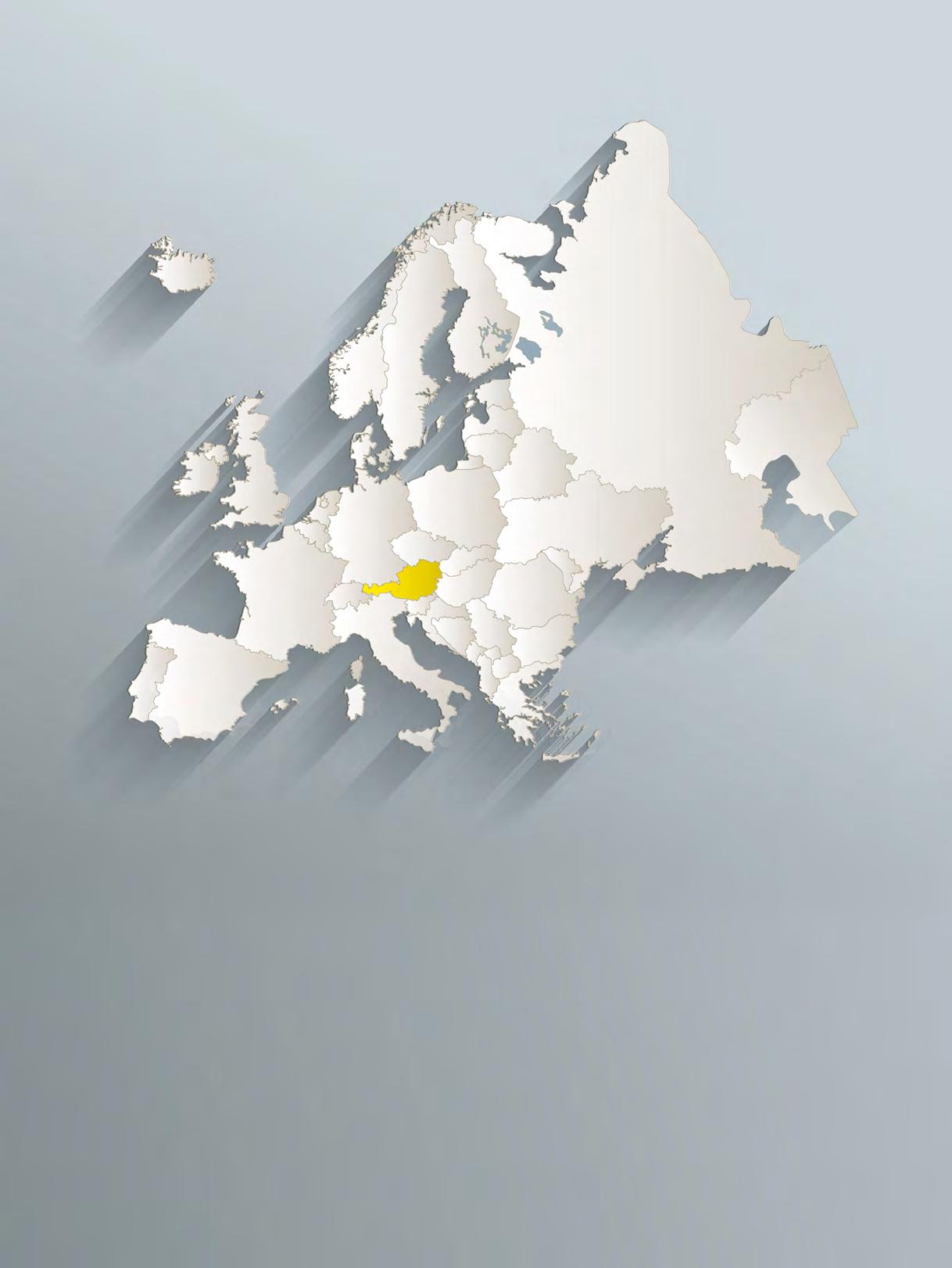







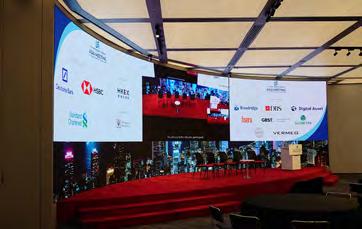

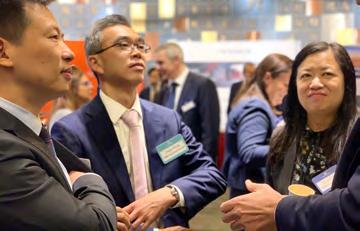


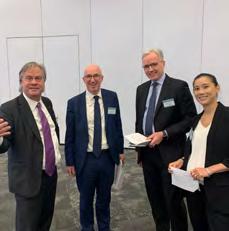



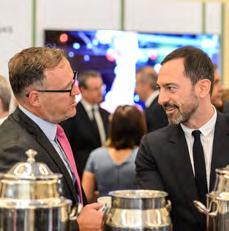

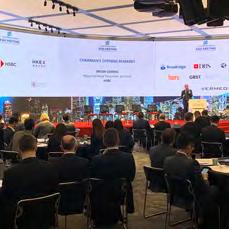
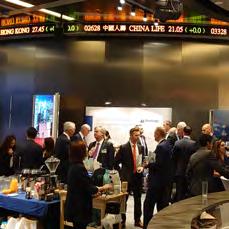
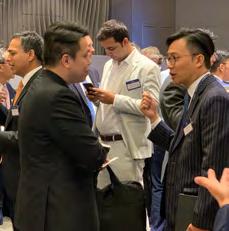

38 Asia 2019 Your Gateway to Securities Services in: www.rbinternational.com serviced via RBI’s direct CSD connections serviced via RBI’s HUB or local GIS units Almaty / Belgrade / Bratislava / Bucharest / Budapest / Kiev / Ljubljana / Minsk / Moscow / Podgorica / Prague / Sarajevo / Skopje / Sofia / Tirana Vienna / Warsaw / Zagreb
One entry to 18 markets
CEE starts in Vienna









































 Alan Cameron Head of Brokers Market Strategy BNP Paribas
Alan Cameron Head of Brokers Market Strategy BNP Paribas




















































































